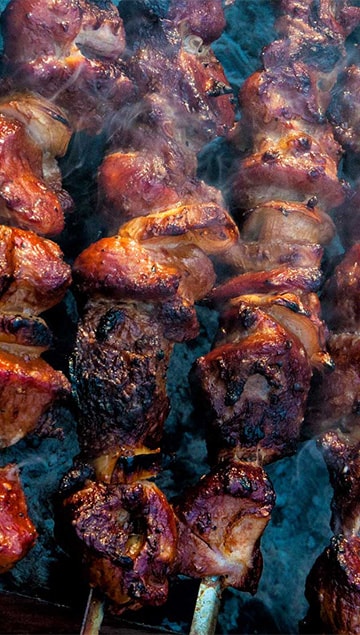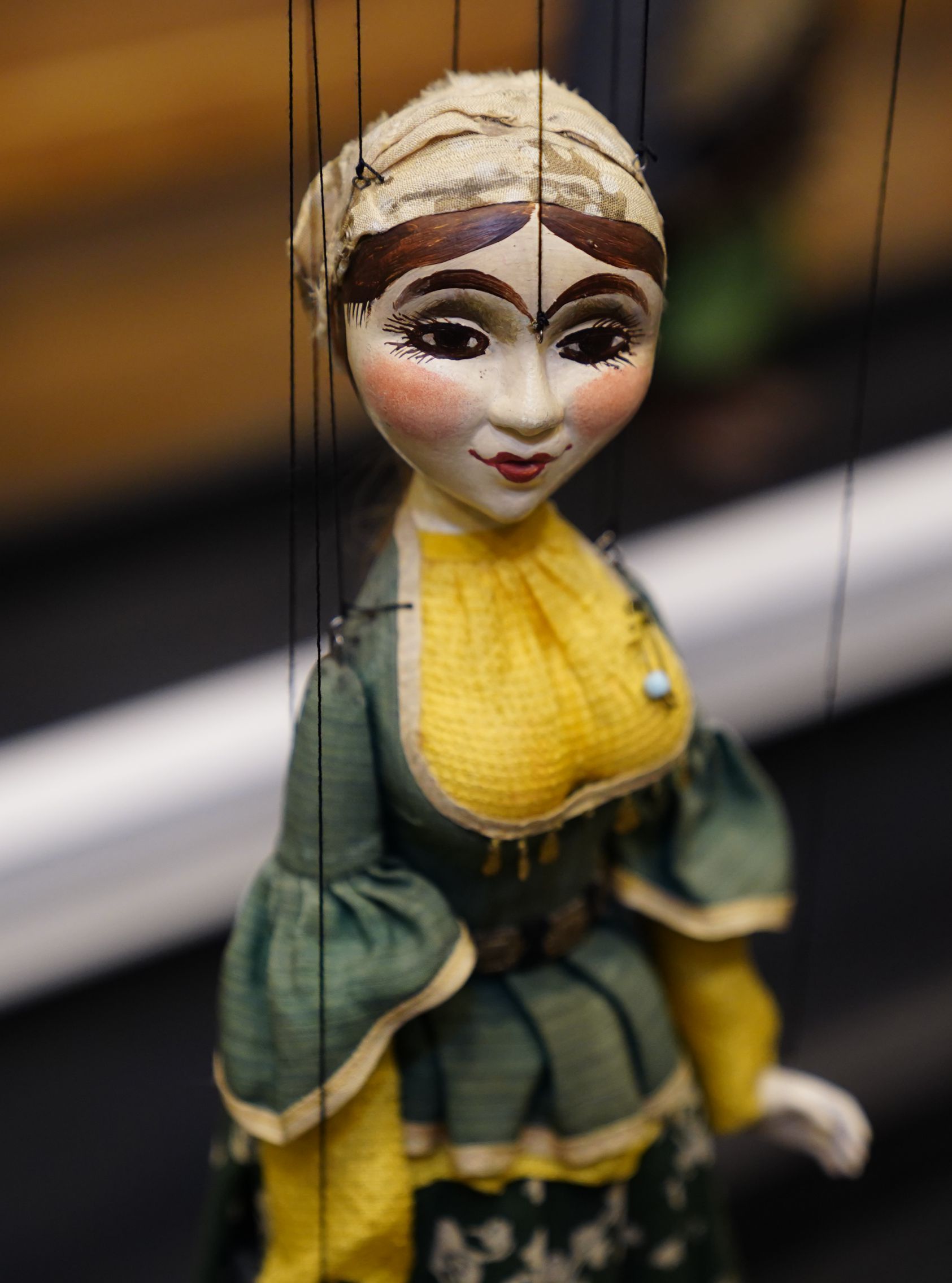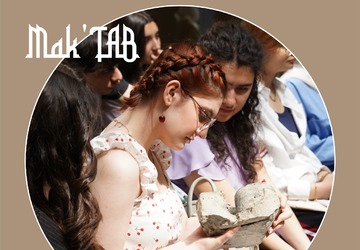Maiden Tower
The symbol of Baku, Maiden Tower was included into the list of World Cultural Heratage of UNESCO in December of 2000. Maiden Tower, erected at the coast of the Caspian Sea preserved its magnificence till our days. The Tower, which was included into the fortification system of Baku, was called “Maiden Tower” for its inaccessibility.
Maiden Tower is a cylindrical shaped tower built at the coast rock. From the sea side the oblong prop (counterfort) adjoins the tower. The height of the tower is 31meters from the north and 28meters from the south. It should be noted that there are some versions concerning the figure “28”. The facts that Caspian Sea is below the world sea level by 28 meters, there are 28 blocks in Icherisheher, the Fortress walls connect 28 semicircular towers, indicate the symbolic character of this figure. The diameter of the Tower is 16meters on the ground floor, and thickness of wall is 5meters on the ground floor. The Tower consists of 8 floors. Each of the eight floors is covered with the stone cupola with round hole in the center. The holes of the cupolas are arranged in such a way that it is possible to see the floor of the ground floor when looking through the openning in the central part of the ceiling of the eighth floor. The single entrance into the Tower is the arched doorway on its western side. The ground floor of the Tower is 3meters high, the height of the other floors is on the average 2,5meters. The connection between the floors is supported by staircases built in the thickness of the south-eastern wall of the tower. At medieval times there was no staircase on the ground floor and therefore the access to the first floor was possible only by lowering the rope or ladder through the circular hole on the ceiling. The door of the tower was also made of several firm layers. This fact is proved by the remains left on top of the arched door way, the length of which is equal to the width (5 meters) of the Tower wall. In order to keep under control the sea and southern and south-eastern sides of the Tower, special loopholes were made on the walls. These loopholes were intended for the circulation of fresh air, as well.
In 1962-63 archeological excavation works were carried out on the ground floor of the Tower. As a result of the digging down to a depth of 5 meters, it was found out that the foundation of the monument was built on a huge rock with slope to the sea. We can come to a conclusion that the counterfort adjoining the monument from the sea side plays the role of a main prop of the Tower in front of this slope.
During the archeological research works carried out in 1964, from the foundation of the Tower there were found big logs 14 meters high, which stretched to the interior of the monument. Even today, the main function of these logs is not known. It is possible that, these logs relate to a special construction inside the counterfort, or protect the building against earthquake.
Shirvanshahs's Palace Complex
Complex of Shirvanshahs Palace was the last residence of the rulers of Shirvan State with the history of thousand years. At medieval times this state was the most powerful state in Azerbaijan. While in the south of Azerbaijan old and new feudal states replaced each other, in its north the borders of Shirvan state stretched up to Derbend, the south of Daghistan. In the historical literature the history of Shirvanshahs’ state is divided into four periods: the first Shirvanshahs, Mazyadids, Kesranids and Derbendis. In the historical literature there is little information about the first Shirvanshah dynasty. Mazyadids dynasty was founded by Heysam ibn Khalid in 861. Mazyadids dynasty of Arabic origin assimilated into local nobility and gradually turned into Kesranids dynasty being local for its traditions and way of life. Shirvanshahs Manichohr, Akhsitan, Fariburz were wise and well-educated rulers from Kesranids dynasty. The last ruler of this dynasty was Shirvanshah Hushenge ibn Kavus. As he had no heir to the thrown, after his death in 1382, feudal lords of Shirvan elected his distinct relative Sheikh Ibrahim as the new Shirvanshah. Sheikh Ibrahim was a poor, but well-known feudal lord from Sheki. As his ancestor had been the ruler of Derbend, Sheikh Ibrahim founded the new Shirvanshahs dynasty of Derbendi. Sheikh Ibrahim ruled in very uneasy period linked with the wars of Emir Timur in Near East. In this period Emir Timur and Tokhtamish khan of the Golden Horde fought for the seizure of Azerbaijan, which had advantageous geographical position and rich natural resources. Campaigns of Timur and Tokhtamish of the Golden Horde that fought against each other passed through Shirvan and inflicted serious damages and losses to the country.
Being a wise ruler and smart diplomat, Shirvanshah Ibrahim I took the side of Timur, the most powerful ruler of that period. In 1386 EmirTimur started to plan a new campaign against Tokhtamish khan. He made a military camp in Barda. Shirvanshah Ibrahim I convened his divan. Members of the divan recommended him to launch a war against Emir Timur. However,Shirvanshah Ibrahim I refused and told that he wouldn’t make his soldiers target to the sharp swords and arrows of enemy and he didn’t want his people to be trampled under feet of horses of enemy. Shirvanshah Ibrahim I stated that he would go to the military camp of Emir Timur and suggest him to be his vassal. Emir Timur would either accept his offer or behead him. Shirvanshah Ibrahim I went to military camp of Timur with various expensive gifts and in every possible way expressed his humility. Although he took all gifts in 9 pieces, the number of slaves was eight. When Emir Timur asked the reason, Shirvanshah Ibrahim I told that he was the nineth slave. Emir Timur liked his grand gesture so much that he recognized the independence of Shirvan state and entrusted him the protection of the northern borders of the country. In 1405 after the death of Timur the empire created by him collapsed. Shirvanshah Ibrahim I making use of the situation achieved the independence of Shirvan state. Sheikh Ibrahim I, who tried to expand the territory of Shirvan state, could unite the other lands of Azerbaijan – Ganja, Karabakh. Thanks to his diplomatic skills and military talent, for thirty five years of reign Sheikh Ibrahim could not only manage to keep Shirvan independent and strengthen its power, but he could also expand the territory of the country.
Mohammed Mosque
In the history of Azerbaijan architecture, minarets play an important role. The minaret next to the Mohammed Mosque, at which you have now arrived, was built in the year 1078 and is a particularly archaic structure. In its way of construction it is typical of the northern regions of Azerbaijan. It was included in the UNESCO World Heritage List because of its significance as an outstanding building.
Let us, for this moment, not stick to the chronological order and start with some events in the year 1723: Peter I., czar of Russia, called “the Great”, made a strategic decision: In order to conquer Persia, he intended to capture the southern shores of the Caspian Sea. He sent a fleet, and in the summer of 1723, 15 combat vessels lay before Baku. Their commander issued an ultimatum for the town: They were to surrender immediately or an attack would follow. The Khan of Baku declined. The reaction of the Russian warfleet was not long in coming and under thunderous fire, parts of the city wall and the minaret collapsed.
All of a sudden, the wind turned, as it often happens in the bay of Baku. The ships of the attackers were driven out into the Caspian Sea.
The residents of the town witnessed this and, according to the legend, interpreted it as a sign from Allah. Instantly, they began with the restoration of the defensive walls. Unfortunately, the efforts were not rewarded. The walls did not have enough time to dry, and the troups of the czar were finally able to capture the town. It was decided by residents to keep the minaret tower destroyed as a reminder of the aggression and it has ever since been seen as a symbol of the the town’s residents’ power of resistance. It is proudly called “Synyk-kala” – the Broken Tower.
Russian listeners of this trip through Icherisheher, and those who come from the eastern parts of Europe, may probably have entirely different associations with “Synyk-kala”.
'Brilliantovaja Ruka' is the key term - “The Brilliant Hand”. A Russian production of 1969, this comedy gained cult status. People like to insert whole passages of dialogues in conversations. The story of clumsy Semyon Gorbunkov, who accidentally gets involved in a diamond smuggling, is actually set in Turkey. But director Leonid Gaidai resolved to shoot several scenes in Baku - one of them right here, in front of the Mohammed Mosque.
If you are able to quote lines from the movie, the authors are happy to invite you to a cup of tea at the second to last stop - the Mugam Theatre - providing they are present.
But let us leave the trivia now and turn to some words about the importance and architecture of the building.
The body of the tower is rather plain, although the carefully chiselled stones are proof of the stonemasons’ skillful mastery of their material.
Its stern appearance stresses the building’s function: To call believers to the prayer and to demonstrate the presence and power of Islam.
This relation is not only accomplished through the tower’s form and function: A date stamping, carved into stone, is evidence for the fact that in front of us lies the very building that was the first one to be explicitly connected with Islam, the prevailing religion in the country. This inscription is still preserved and can be found on the northern side of the mosque, next to the entrance. Engraved in Kufi, one of the oldest Arabic scripts, it says: “This mosque was built by Ustad-Rais Muhammad ibn-Abu-Bakr in the year 471.” Converted to Christian calculation of times, this is the year 1078/79.
The original mosque from the 11th century is not preserved, but excavations documented that it was built on top of the original grounding, adopting its outlines.







1747310399.jpeg)

1747293072.jpeg)
1747300092.jpeg)
1746526398.jpeg)